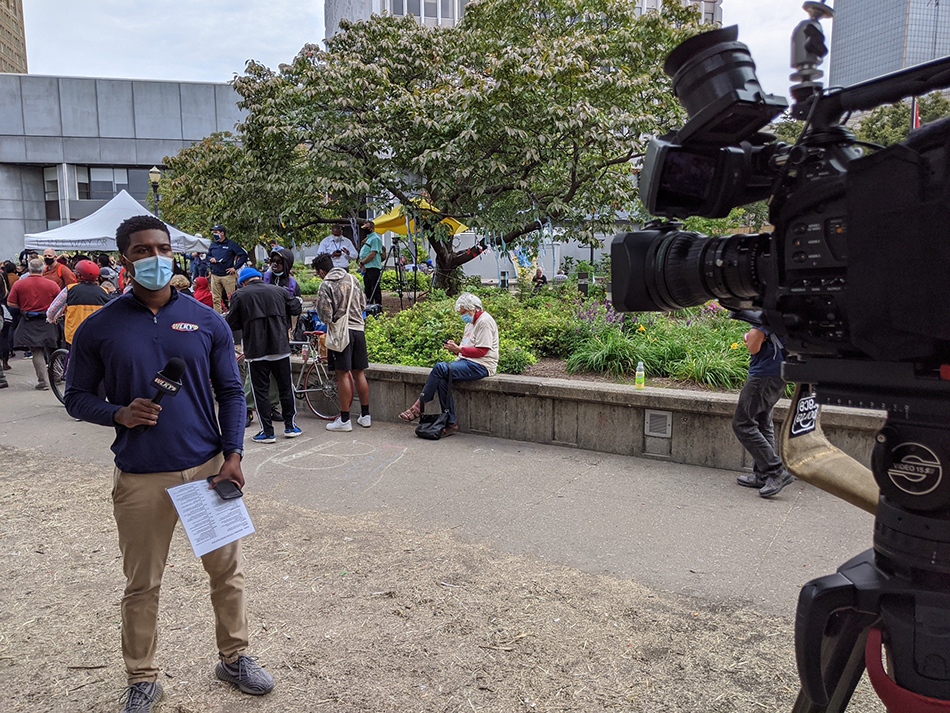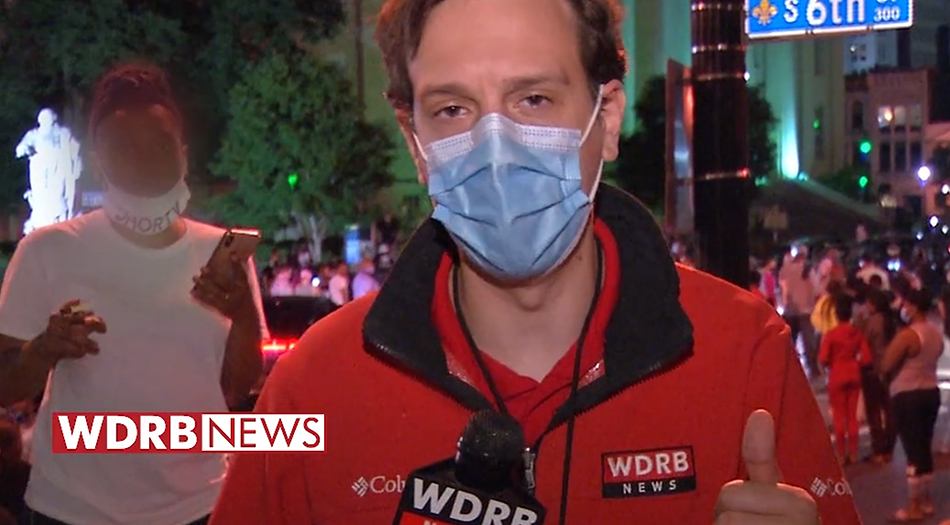Protests Keep Stations in Louisville Hopping
WDRB wins ratings derby in highly competitive market

It’s not an easy time to be in Louisville. The protests for racial equality have been ongoing in the city, home to the late Breonna Taylor, with Jefferson Square Park the epicenter. Christy Moreno, president and general manager of WHAS, counted 140 straight days of protests as of mid October. “It’s become part of our daily routine here,” she said.
The stations and their personnel have at times been targeted. WLKY’s chief photographer, Paul Ahmann, was knocked unconscious at a protest and a station vehicle was destroyed. Reporters ventured out with security guards and bulletproof vests. “Security has been nonstop for us since late May,” Glenn Haygood, WLKY president and general manager, said in early October. “It’s a very dangerous situation that makes you say you’re not leaving anything to doubt.”
For the most part, the protests are peaceful. Haygood stressed that it’s a small slice of Louisville seeing unrest. “Ninety nine percent of Louisville does not look like that part of downtown,” he said.
RELATED: WHAS Louisville Reshapes News
Tegna owns ABC affiliate WHAS. Hearst TV has CBS outlet WLKY. Block Communications owns Fox outlet WDRB and The CW affiliate WBKI, which has MyNetworkTV on a subchannel. Gray Television owns NBC station WAVE.
Spectrum is the dominant pay TV operator.
Around a quarter of market viewership is in Indiana, across the Ohio River.
Broadcasting & Cable Newsletter
The smarter way to stay on top of broadcasting and cable industry. Sign up below
The stations and the Louisville Courier-Journal have worked together on security. They had a camera installed at Jefferson Square Park to keep an eye on protests, and met with the acting police chief to share concerns. “We put down our competitive urges and shared a lot of information on safety,” Moreno said.
The Kentucky Derby was held in September with no spectators due to the pandemic. “It’s such a showcase for our community,” Dale Woods, WDRB-WBKI president/general manager, said. “That was such a disappointment.”
It’s hardly all doom and gloom in DMA No. 48. The beloved Kentucky Bourbon Trail is booming, and TV advertising is picking up. “We definitely see some businesses returning to normal, and certain businesses are actually thriving,” said Moreno, singling out home improvement.
WDRB, whose call letters are short for Derby, is a ratings beast. The station won the September race in viewers 25-54 at 6 a.m., 5 and 6 p.m. and 11 p.m., posting a 1.83 in the latter, ahead of WLKY’s 1.30, WAVE’s .98 and WHAS’s .85. WDRB is a force in households too, though it was WLKY that took tight races at 5:30 and 6 p.m. in September. At 11 p.m., WDRB averaged a 4.06, WLKY a 3.36, WHAS a 2.32 and WAVE a 2.27.

Independently owned stations are uncommon, but family ownership is an asset for WDRB. “We’re not reporting to Wall Street every quarter,” Woods said. “We’re here to have the best product for our viewers.”
Woods marked his one-year anniversary at the station Oct. 1. WDRB also celebrated the one-year anniversary of a 5 p.m. news, with Judge Judy sliding over to 7 p.m.
Political advertising is rolling, as Mitch McConnell battles Amy McGrath for his Senate seat. “If you’re watching TV in Louisville, you’re going to see McConnell and McGrath ads,” said Haygood, who noted a “very strong” fourth quarter in the works.
Louisville’s lively food scene and strong corporate culture, including UPS and GE, have the market poised for recovery. “There’s a lot of hurt here, and a lot of repair that needs to be done,” Moreno said. “But people here are really dedicated to making Louisville a better place to live.”
Michael Malone is content director at B+C and Multichannel News. He joined B+C in 2005 and has covered network programming, including entertainment, news and sports on broadcast, cable and streaming; and local broadcast television, including writing the "Local News Close-Up" market profiles. He also hosted the podcasts "Busted Pilot" and "Series Business." His journalism has also appeared in The New York Times, The L.A. Times, The Boston Globe and New York magazine.

